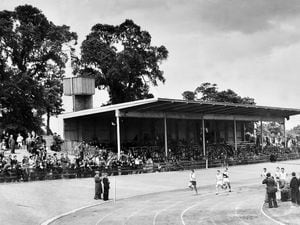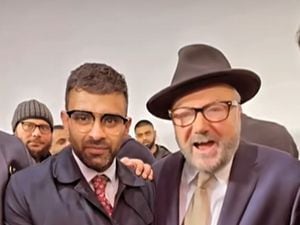Testing times as driving exam turns 85 - with many changes along the way
In 1935, Sir Malcolm Campbell became the first person to drive at speeds greater than 300mph, setting an astonishing world land-speed record at the Bonneville Salt Flats in Utah.
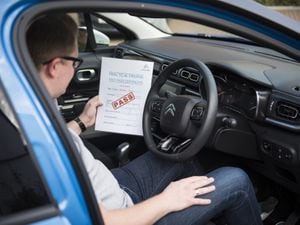
The same year, he put on his best Chomondley-Warner voice to offer tips on how to get through the new driving test in a short film produced by the Ford Motor Company.
"Coming from a side turning without stopping is as bad as driving with your eyes closed," said Sir Malcolm.
"It's criminal."
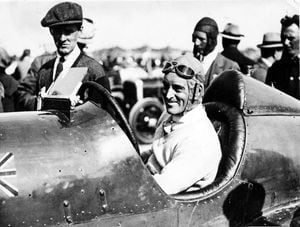
Don't be nervous, try not to drive in the centre of the road, and never flick cigarette ash out the window of your Ford Pop, more or less sums up his advice on how to get through it.
It is 85 years today since the UK introduced a compulsory driving test, something which would become one of the great coming-of-age milestones, along with buying your first drink and being allowed to vote.
The first test lasted just 25 minutes and featured hand signals, an emergency stop and six questions on the new Highway Code. Many would say it was not before time. First to pass was a Ronald Beere.
In 1935 only 1.5 million vehicles used the UK roads and yet the carnage was terrible with more than 7,000 deaths per year. Today, by comparison, we have nearly 40 million vehicles and about 1,700 deaths annually.
The test was introduced by Transport Minister Leslie Hore-Belisha, better known for the Belisha beacon traffic signals.
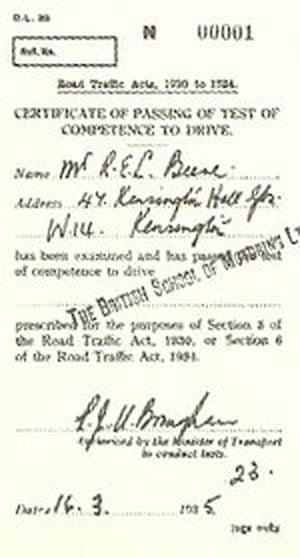
At the launch of the test, Belisha said: “Driving is an art in which those who are engaged should, in the interest of their own and of the public’s safety, take the greatest pains to make themselves proficient.”
Devised with the help of the British School of Motoring, the test had an immediate impact. A total of 154,636 tests were carried out in 1935, and within a few years the number of road deaths fell by more than 1,000. There were not driving test centres in those days; instead candidates would meet their examiner at an agreed meeting point, such as a railway station, where the test would begin.
The test had only been in place for four years when it was suspended on the outbreak of war, with the testers being redeployed on traffic duties and overseeing petrol rationing. It was suspended for a second time in 1956 during the Suez Crisis, during which time learners were allowed to drive unaccompanied while examiners administered petrol rations.
More than 46 million tests have been conducted over the past 85 years, and the test stayed largely the same for the first 60 of them.
The use of compulsory indicator lights made hand signals redundant, and these were removed from the test in 1975. A reverse parking manoeuvre was introduced in 1991, but the big change came in 1996, with the introduction of the written theory test. A video hazard perception test was introduced in 2002. The practical test, which cannot be taken until the theory test has been passed, now lasts 45 minutes, and is far more rigorous. The theory test was also beefed up in 2007, with the number of questions increased from 35 to 50, with learners required to get at least 43 of them right.
Chris Blake, a Telford-based driving instructor with 20 years experience, says today's test is much more stringent than the one he took as a young man.
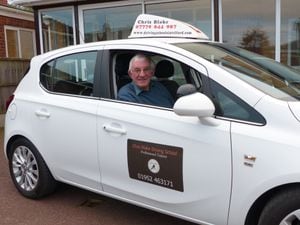
"When I took my test, if you did something wrong they would probably give you a telling off and say 'don't do that again', but today if you clip a kerb or something, you know you are not going to pass," he says.
Another major change came in 2017, when an extended 20-minute 'independent driving' section using satellite navigation was added to the test, something which Chris says many of the learners find quite difficult.
"While you or I might be quite used to using sat-nav, a lot of the youngsters aren't," he says. "They have got to listen to the sat-nav vary carefully for directions, or they will find themselves going in the wrong direction."
He cites a gyratory system in Telford, where two traffic islands have been joined together, with five different exits, as something that can catch the novice driver out.
"If you or I find ourselves in the wrong lane, we will go round again, or take the wrong turning, but if the youngster gets in the wrong lane they may change lanes quickly or cut somebody up, and the examiner will grab the wheel and say 'you can't do that'."
The theory test, which in its early days was sometimes derided for being too easy, is now much more difficult, says Chris.
"I've had some pupils taking the theory test seven or eight times, but once they have got that they get through the practical test in one or two goes," he says.
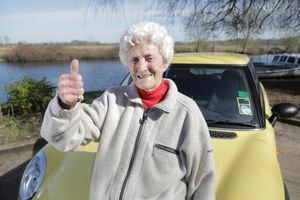
Chris says the the theory test is all done on computer now, and unlike some instructors, he provides specific lessons to prepare pupils for it.
Today's learners are certainly more likely to need a re-test than Mr Beere's contemporaries were: in 1935, the pass rate was 63 per cent, compared to 43 per cent today.
And not only has the test got tougher, it has also become more expensive. Mr Beere paid the princely sum of 7s 6d for his test, about £26.50 at today's prices. Today, the theory test alone is £23, and once you have got through that the practical test is another £96 on top. Mr Beere actually took his test seven weeks before it became compulsory; wisely, the Ministry of Transport introduced the test on a voluntary basis some weeks before, to prevent a rush of applications on June 1.
While the length of time people take to pass the test can vary enormously, few people will take as long as Eileen Ash from Norfolk, who made history in 2017 as the oldest person to past the test. Eileen, who had been driving long before the test was introduced, finally passed at the age of 105 as part of a television series.
One thing that has not changed is the feeling of apprehension that the learner drivers will inevitably feel when their moment of truth comes.
But as Sir Malcolm said, there is nothing to fear from the test itself: "Don't be nervous, the driving tests have one objective, that is to make our roads safe, and the examination is not an inquisition."

